Captivated by Captions: Part II
Last week I told you how thrilled I've been to immerse myself in kanji photos and in the challenge of writing captions for them. As you may remember, I enumerated these benefits:
1. A morning meditation: I found myself with a wonderful morning practice, one that was meditative and calming, just as any routine is when it requires you to focus.
2. A great test: Signs afford a fantastic test of what you know. Because I'd already written essays about these characters, they were also a great way of seeing what I no longer knew!
3. Detective work: With every sign that was less than straightforward, I felt like a sleuth as I tried to "crack the case"! I also had an opportunity to hone my instincts about how the Japanese think.
4. Proof that people really use these words! My photos always remind me of what I discovered over and over in Japan—namely, that the terms I've written about really do exist! People use these words and know how to read them!
Now I'm ready to share two more great aspects. Both involve the wealth of information compressed in photos.

Photo Credit: Eve Kushner
This clay figurine, on display at Nagoya Castle, is of a tiger dressed to the nines as a samurai! The text also contains a valuable tidbit in terms of kanji history; in the phrase 虎の裃 (とらのかみしも) we come upon 裃, a non-Joyo kokuji that means "samurai garb."
5. A Reason to Delve Into Cultural Information
Although kanji signs in the world can't have hyperlinks, it's almost as if they do, because their words and images frequently send me off on trails of inquiry about Japanese film, history, literature, and food, among other topics.
a. Film
Last week's JOK Notebook featured this movie poster from The Seven Samurai:

For essay 1936 on 郎 (male name suffix), I wrote about the name on the far right:
三船敏郎 (みふね としろう)
Ah, Toshiro Mifune, the star of the movie and the main man featured on that poster! I'd been curious about him because I had recently had an extensive correspondence with someone who identified himself to me only with the alias Toshiro Mifune. My correspondent said he was a big fan of the actor, and his email address reflected this alias, as well. To write a blurb about Mifune for the essay and to verify facts about his life, I ended up on Wikipedia. What a fascinating life it turned out to be!
By the way, I've recently written about other old movie posters, including this one:
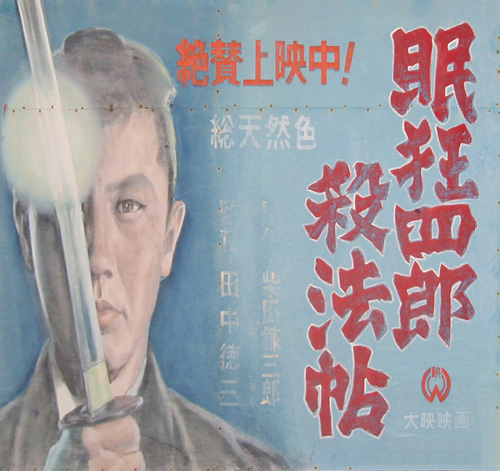
Again the words on the right contain 郎 in this name:
眠狂四郎 (ねむり きょうしろう)
This is the name of a character, who is a swordsman, and it's part of the movie title. Incidentally, the film is based on a novel by 柴田錬三郎 (しばた れんざぶろう), who also has a name ending in 郎!
b. History
Thanks to a clay figurine of a man riding a tiger in the Nagoya Castle exhibit, I learned the history of Watonai, a 17th-century warrior from China with a Japanese mother. As I discovered, the Chinese and Japanese have celebrated him in different ways. For example, a Japanese dramatist created an extremely popular bunraku (puppet play) about Watonai's life in 1715.
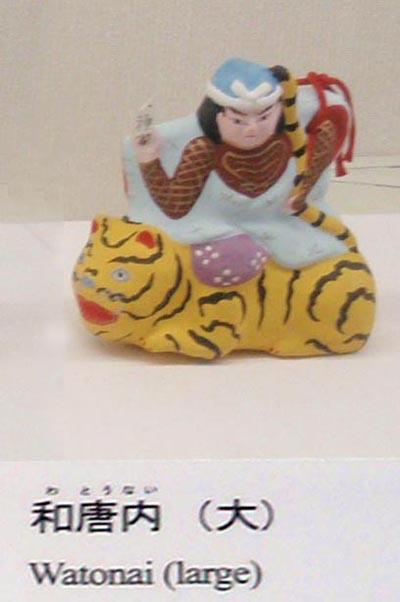
Shifting ahead a few centuries, I also wrote about a gravestone from 1920 in Broome, Australia:
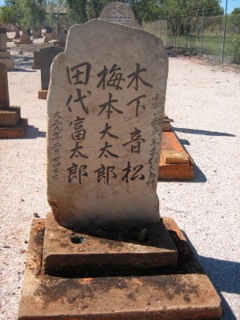
Yet again, thanks to the 郎 characters in Judith Wimborne's photo, I found out about Japanese pearl divers who had immigrated to Australia.
c. Food
Japanese food is infinitely complicated, and I'm always amazed at how much there is to learn. By writing about photos with 辛 (spicy) for essay 1432, I discovered one restaurant's creation: a ばくだん焼, or "cooked bomb." A baked ball of flour 8 centimeters in diameter, this massive delight contains many ingredients.
And through the sign below, I learned about ちゃんぽん, a noodle dish with lots of ingredients. I wrote about this photo in essay 1552 on 沢 (marsh; plentiful). To my surprise, the 野菜沢山 (やさいだくさん: dishes with many vegetables) at the upper right is just a sales slogan, not the name of the soup shown in the picture.
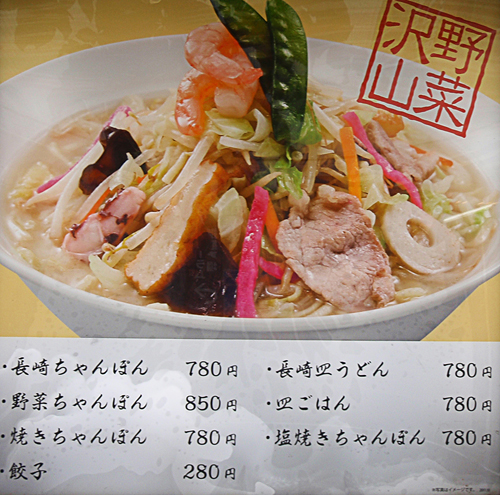
6. The Language of Ads
For some reason I keep coming across references to "the language of flowers" in random contexts. That phrase always amuses me; I imagine daffodils and irises giggling together and chatting with their own special vocabulary.
Well, how about the language of signs? It's a mysterious, compressed language with a lexicon and syntax of its own. By writing about signs over the last few weeks, I've encountered more than a handful of words that don't exist in Japanese dictionaries, including these:
• The coined word 旨辛 (うまから) means "deliciously spicy."
• The word 豆舗 is not real. Instead, 店舗 (てんぽ) means "store, shop," and 豆舗 is a coined name for a 豆舗 that sells 豆 (beans).
• The coined term 手燻 (しゅくん) means "smoked by hand," in reference to meat, not cigarettes! The second kanji is non-Joyo.
• In the Nagoya Castle exhibit, a figurine of a mother monkey with her baby was labeled 子抱猿 (こだきざる). Although 子抱 (child + to embrace) isn't in the dictionary, it works here as a compressed description.
• Similarly, 魅せる isn't in the dictionary. However, advertisers often use this coinage, combining 見せる (みせる: to show (off)) with 魅了する (みりょうする: to charm). We see 魅せる in large type in this photo:
I took this picture so I could write about 辛口カジュアル for the essay on 辛. But what did the phrase mean?! Proofreader Lutlam figured that 辛口カジュアル would be something like "red-hot casual clothes." However, he said, "辛口カジュアル sounds quite obscure to me, too. The entire ad message is deliberately written quite vaguely."
I've certainly seen ads in English and not known what they're selling. This happens so often that I don't know how the advertisers feel they're getting an ROI. But I don't recall hearing words in those ads (other than medical ones) that made no sense to me. This seems to be a special feature of Japanese ads. Even the Japanese may not be aware of how much is flying over their heads; my language partner once told me, "Thanks to you, I now know that there are signs in Japan that I can't read. I never knew that before."
A Special Offer!
Because there's an infinite amount to learn from kanji photos and captions, I have rediscovered my excitement about JOKIA photo albums. "JOKIA" means "Joyo Kanji in Action," and sure enough, the photos show the characters in real-world contexts. Each set of 10 photos puts the spotlight on five kanji, ideally to show one Joyo on-yomi and one Joyo kun-yomi for every character. The captions contain loads of information. What's more, the JOKIA albums double as flashcards because you can hide the photo captions and test yourself on subsequent readings to see what you've absorbed.
One JOK customer told me, "I like the JOKIA idea very much because I want to see kanji in a context. That is essentially how I can learn them. It's also the way I learn kanji-based vocabulary. If I already know a kanji and see it together with another one I don't know yet, I look up the new one, and that's how I can memorize it. But if I'm writing a new word with complicated kanji that I have no idea about yet, usually I cannot remember it at all— neither the word nor the kanji, just plain nothing."
I passionately believe that JOKIA albums are a terrific and fun way to learn kanji, and I'd like more people to see this for themselves. For that reason, I'm offering a special deal from now through October 31:
Buy 1 essay and
get 1 JOKIA album free!
What a bargain! Even without this great offer, JOKIA albums are completely affordable, priced at just $.50. Of course, they're free with a subscription to Joy o' Kanji!
On Tap This Week
Here are the essays I've just reintroduced:
Essay 1144 on 詰 (to pack into): Added 2 photos on p. 10.
Essay 1166 on 狭 (narrow): Added 2 photos on pp. 12 and 13.
Essay 1196 on 恵 (blessing): Added 6 photos on pp. 13–15. Also added けい to the name yomi list on p. 1.
Essay 1212 on 肩 (shoulder): Added 4 photos to pp. 10–12.
Essay 1388 on 匠 (master; craftsperson): Added 8 photos on p. 4 and pp. 10–14. Also made "master" the primary definition of this kanji, adjusting the discussion on p. 2 accordingly.
Essay 1432 on 辛 (spicy): Added 6 photos to pp. 16–18. Also fixed photos on pp. 3 and 5, as they had become unfocused in the June 3 edition.
Essay 1640 on 豆 (bean): Added 4 photos to pp. 15–17. Also revised the definition of katsuobushi on p. 8.
Essay 1829 on 麻 (hemp): Added 3 photos on pp. 13–15.
Essay 1936 on 郎 (male name suffix): Added 8 photos on pp. 6, 8, and 12–15
Essay 1987 on 臼 (mortar): Added 7 photos on pp. 9 and 12–14.
Essay 2005 on 虎 (tiger): Added 8 photos on pp. 14–16.
Also, in Radical Note 64 on the "hand" radical, I've added a photo under the heading "The Variant 扌 Always Goes on the Left." The picture features five instances of this radical in a row!
Have a great rest of the week!

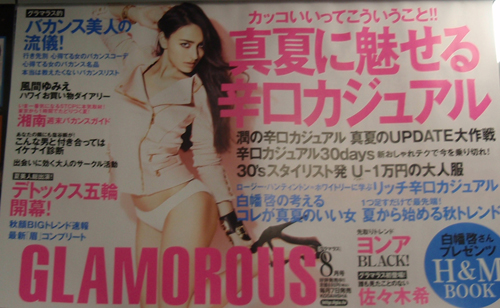
Comments